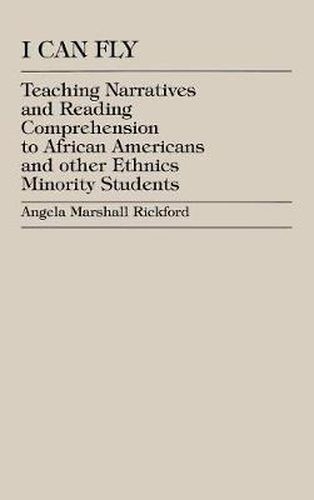Readings Newsletter
Become a Readings Member to make your shopping experience even easier.
Sign in or sign up for free!
You’re not far away from qualifying for FREE standard shipping within Australia
You’ve qualified for FREE standard shipping within Australia
The cart is loading…






I Can Fly highlights the critical importance of narrative structural analysis in teaching reading comprehension, while providing a system for constructing comprehension questions that are grounded conceptually in the structure of the stories that the students read, from both a practical, and theoretical, orientation. The author presents the idea that folk tales and ethnic literature provide excellent material for the teaching of reading, particularly to multicultural or minority populations, by increasing the cultural congruence and motivation for multicultural students through their inclusion of language, illustrations, situations, and perspectives in which they see themselves reflected. These conclusions arise from a two year study in a middle school classroom in California with low income, ‘at risk’ students, most of them African American, but including Latinos and Pacific Islanders.
$9.00 standard shipping within Australia
FREE standard shipping within Australia for orders over $100.00
Express & International shipping calculated at checkout
I Can Fly highlights the critical importance of narrative structural analysis in teaching reading comprehension, while providing a system for constructing comprehension questions that are grounded conceptually in the structure of the stories that the students read, from both a practical, and theoretical, orientation. The author presents the idea that folk tales and ethnic literature provide excellent material for the teaching of reading, particularly to multicultural or minority populations, by increasing the cultural congruence and motivation for multicultural students through their inclusion of language, illustrations, situations, and perspectives in which they see themselves reflected. These conclusions arise from a two year study in a middle school classroom in California with low income, ‘at risk’ students, most of them African American, but including Latinos and Pacific Islanders.